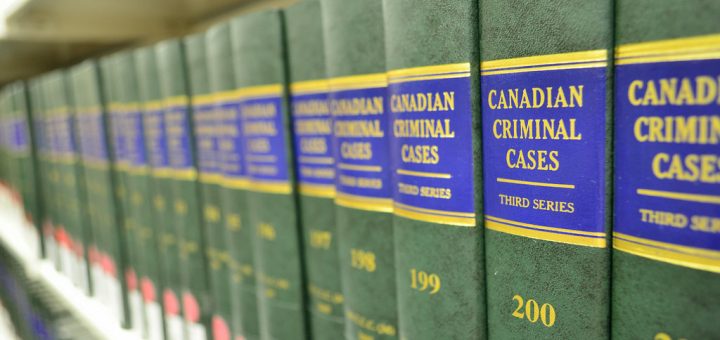The Supreme Court of Canada’s Clarification of Abetting and Counselling in R v Cowan

Canadian law is clear that liability extends to ‘lookouts’ and ‘get-away’ drivers. For this reason, an accused cannot put forward the defence that they were not directly involved in the offence and are thereby innocent. The Supreme Court of Canada (“SCC”), however, encounters difficulties when applying the law on abetting and counselling in R v Cowan, 2021 SCC 45 [Cowan]. This article will now explore the controversy surrounding the decision by examining both the majority and minority judgements in the SCC.
Facts
On July 7th, 2016, between 9:00 p.m. and 9:30 p.m., an employee at a Subway witnessed two masked individuals enter the establishment (Cowan, para 8). One of the masked men stood watch at the front door while another brandished a knife and demanded that the Subway employee place money from the register and the coin dispenser in a bag (Cowan, para 8). In total, the petty theft resulted in a loss totalling about $400.
Police obtained security footage and found that one of the masked men was wearing highly distinctive running shoes (Cowan, para 9). A few days later, an anonymous tip was received that implicated the accused, Mr. Cowan, and during surveillance the police found that he was wearing the same distinctive running shoes (Cowan, para 9). On August 11, 2016, the police arrested the accused, who after denying all allegations of involvement, admitted that he instructed the other individuals how to commit a robbery (Cowan, para 11). These individuals include Mr. Tone, Mr. Fiddler, ‘Littleman’ and Mr. Robinson. The Crown subsequently charged Mr. Cowan for the Subway robbery as per section 343(d) of the Criminal Code (armed robbery) (Cowan, para 13). At trial, the Crown advanced two theories on criminal liability – “either he was the masked robber and therefore a principal offender, or he was a party in that he abetted or counselled the commission of the offence” (Cowan, para 13).
The Law
At issue in this case are the following provisions from the Criminal Code:
Parties to an offence – section 21(1)(c)
- 21 (1) Everyone is a party to an offence who
o (a) actually commits it;
o (b) does or omits to do anything for the purpose of aiding any person to commit it; or
o (c) abets any person in committing it.
Counselling commission of offence – section 22(1)
- 22 (1) Where a person counsels another person to be a party to an offence and that other person is afterwards a party to that offence, the person who counselled is a party to that offence, notwithstanding that the offence was committed in a way different from that which was counselled.
Procedural History
Saskatchewan Court of Queen’s Bench
The trial judge acquitted Mr. Cowan on the fact that he could not find that the Crown had established beyond a reasonable doubt either theory of criminal liability (Cowan, para 17). In particular, the trial judge found that Mr. Cowan “clearly admits that he told the persons, which he claimed committed this robbery, namely [Mr. Tone and Littleman] how to do it” (Cowan, para 19). However, the trial judge was not satisfied that it was Mr. Tone and Littleman who participated in the Subway robbery as the principal offenders. This was a material fact that deterred the conviction of Mr. Cowan on aiding or abetting charges.
Saskatchewan Court of Appeal
The Crown then appealed the acquittal on the basis that the trial judge committed a legal error on the theories of liability. The appellate court was divided, with the majority finding that the trial judge erred in requiring identification of the principal offenders (i.e., Mr. Tone and Littleman). In their opinion, the Crown had to prove that Mr. Cowan had the intention of abetting a principal offender who had taken some action in the commission of an offence (Cowan, para 22). The majority would have set aside the acquittal and ordered a new trial on a limited scope of “whether Mr. Cowan is guilty of robbery, as a party, on the basis of abetting or counselling” (Cowan, para 24). The dissenting judge, on the other hand, found no error in the trial judge’s application of the law, nor believed the error was sufficient to overturn an acquittal.
Issues on Appeal
The Issues are:
(1) Did the trial judge err in his assessment of Mr. Cowan’s guilt as a party on the basis of abetting or counselling?
(2) If so, could the error reasonably be thought to have had a material bearing on Mr. Cowan’s acquittal such that a new trial is warranted?
(3) If a new trial is required, did the Court of Appeal err in restricting the scope of the new trial to the question of whether Mr. Cowan is guilty as a party on the basis of abetting or counselling?
SCC Analysis
The majority of the court found that the trial judge erred in their application of the law regarding abetting/counselling and that a retrial must take place (Cowan, para 28). They find that the Crown is not required to prove the identity of the principal offenders, or the role they played in the robbery (Cowan, para 31). The actus reus (i.e., the act) elements required that the accused must be shown to abet or omit something “that encourages the principal to commit the offence” (Cowan, para 32). The mens rea (i.e., the mental element) involves either proving intent or knowledge to abet the committal of an offence (Cowan, para 32). Any requirements that the Crown has to prove the identity of the principal offender or their specific role in the commission of an offence is vehemently objected to. As a result, the Crown was under no requirement to prove the identity of Mr. Tone and Littleman as principal offenders. Both the actus reus and the mens rea could have been made out from the statement that Mr. Cowan made to the police, wherein he set out how Mr. Tone and Littleman could commit a robbery.
The majority further states that “acquittals are not overturned lightly” (Cowan, para 28). In order for a Crown to meet this high threshold on a legal error, there must be “a material degree of certainty that the impugned error of law might have had a material bearing on the acquittal” (Cowan, para 46). The majority was satisfied that this was achieved through Mr. Cowan’s statements to the police that he abetted/counselled the accused on how to commit a robbery. They believe that the outcome would have been different without an error in law by the trial judge (i.e., a conviction). To further add to this, the majority finds that it is artificial that the appellate court limited the scope of the analysis to the issues surrounding abetting and counselling. Rather, a full retrial must take place regarding “all available modes of committing the offence”(Cowan, para 56).
The dissent, on the other hand, would restore Mr. Cowan’s acquittal because it would be unfair to relitigate the issue (Cowan, para 77). If the Crown could lead any evidence, then it would be inconsistent with previous findings made in favour of the accused. The dissent even goes so far as stating that the Crown position seems to be “if at first you don’t succeed, try, try again” (Cowan, para 82). An acquittal would ensure the proper administration of justice as resources are used efficiently and the integrity of the criminal justice process remains protected from inherent unfairness.
Conclusion
In conclusion, the SCC in Cowan found that when proving aiding or abetting of an offence, the Crown is not required to demonstrate the identity of the principal offenders. This approach ultimately provides a lower bar for the Crown and thereby has implications on accused rights. Criminal law is characterized as a constant tension between the state’s ability to enforce the law and accused rights, with this decision definitely pushing the struggle in favour of law enforcement.








Join the conversation